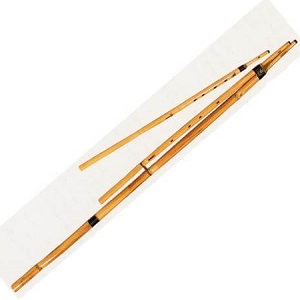Launeddas
 The launeddas consist of three pipes of different lengths that the player supports with his hands. In the upper extremity of the pipes, there is a small piece of cane on which is engraved the reed (cabitzina); the reed vibration produces the sound of the instrument.
The launeddas consist of three pipes of different lengths that the player supports with his hands. In the upper extremity of the pipes, there is a small piece of cane on which is engraved the reed (cabitzina); the reed vibration produces the sound of the instrument.
The longest drone (tumbu) is without any holes and it produces a single deep and continuous sound. The other two chanters (mancosa and mancosedda) instead have five rectangular holes, four of which are fingered while the last determines the intonation of the instrument when the others are closed. The launeddas family includes different types of instruments, the cuntzertus, each of which is identified by a specific name
An ancient Nuragic bronze dated XIII – IX century B.C. represents a player of a three pipes instrument: this one could be a progenitor of the instrument that we know today. In ancient times, instruments that have similarities with launeddas were widespread in different parts of the Mediterranean. Various kind of wind instruments with three or two pipes are represented in the frescoes of Egyptian tombs, in the Greek ancient vases and in Roman mosaics.